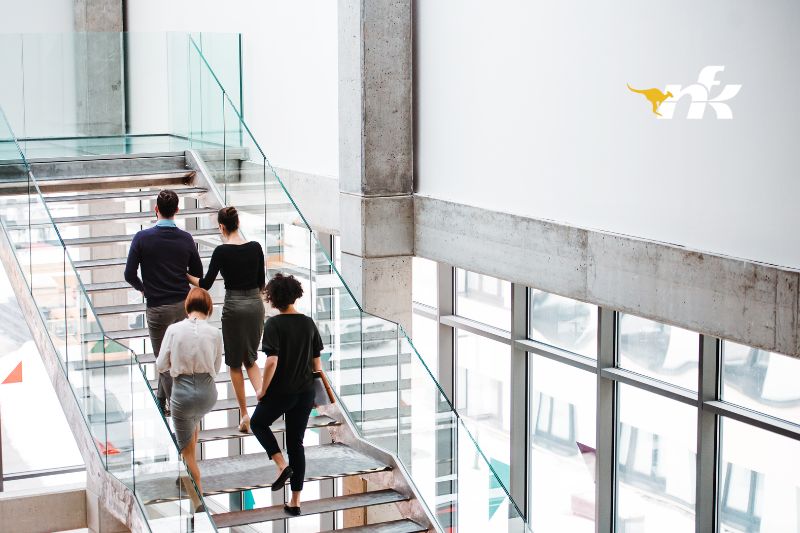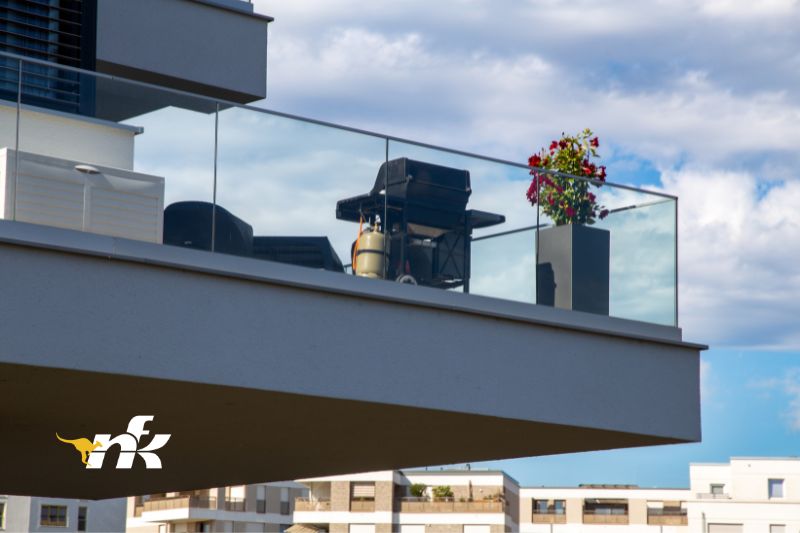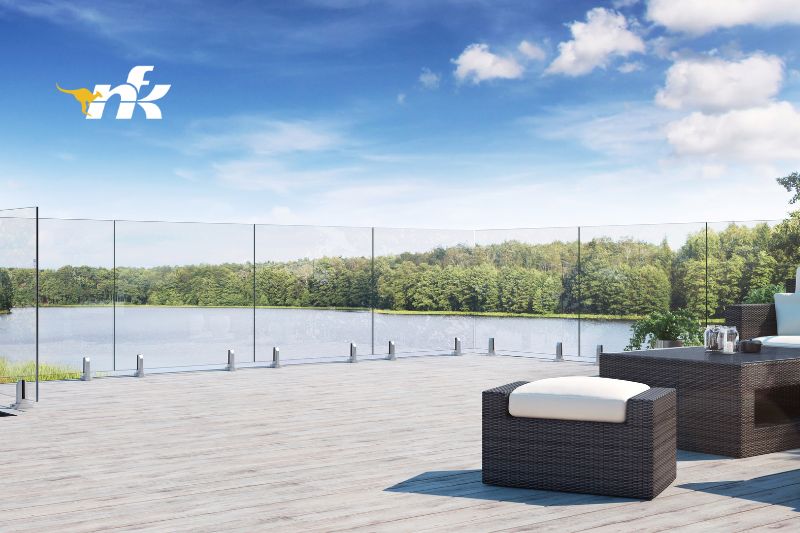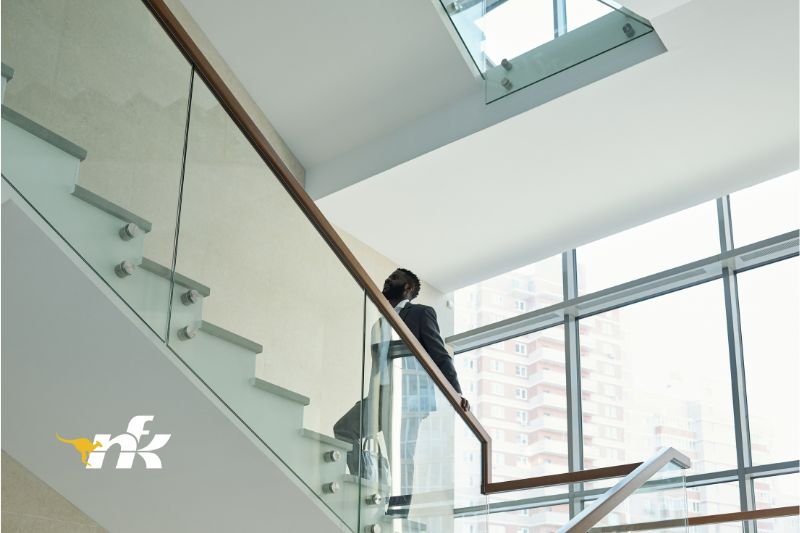|
NFK Glazing & Industrial Supplies |

|
|---|
Glass balustrades solutions review: quality, price, design, and maintenance
Feb 1, 2023
Glass balustrades are one of the most popular ways to add light to internal spaces and highlight external views. At first glance, the different glass balustrade systems may look similar, however, there is a massive variation in architectural hardware available. And like everything, the hardware used can differ significantly in terms of price, safety considerations, visual appeal and how easy it is to assemble, install and maintain.
As a leading Australian supplier of industrial hardware for 40 years, we have decades of experience sourcing and supplying glass balustrade systems. The honest feedback we receive from glaziers who have purchased and installed these systems over the years has given us unique insight into the pros and cons of the different options available.
Here we have collated information about the four most popular glass balustrade systems to help you decide which one best suits your needs.
1. Clamps – the original ‘semi frameless’ solution
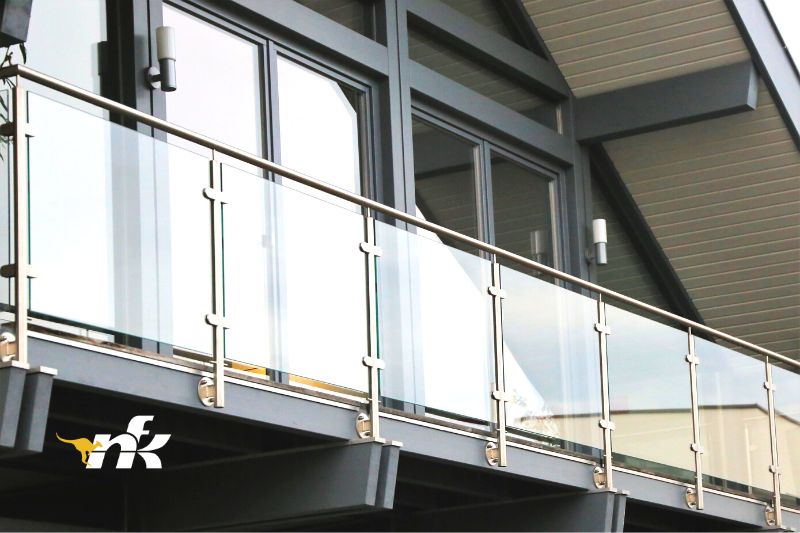
One of the oldest solutions uses stainless steel clamps attached to posts to hold glass panels in place. A handrail is also generally used to transfer load away from the glass, providing a ‘semi-frameless’ solution.
Pros:
This style of balustrade has been used for decades because it is a safe, reliable option for many applications. Clamps often work well in projects with smaller budgets.
Cons:
While clamps may be inexpensive, fabrication costs can add up due to extras like posts and handrails. Clamps are also not ideal for heavier glass as there is a risk of glass slipping due to the limited holding force. Extra hardware can make panels harder to clean and some people find the look of clamps slightly outdated.
2. Glass Balustrade Channel System – the most advanced totally frameless solution in 2023
Channel systems have developed in recent years to provide a safe, efficient and cost-effective way to install totally frameless glass solutions in everything from multi-storey buildings to family homes. The channel provides a base of support for various glass thicknesses and “make-ups” of safety glass.
Pros:
Channel systems can be used indoors and outdoors to create curved or straight glass balustrades. Aside from its sleek looks, the channel system works well because it is fast and easy to install under most conditions. For example, when access is limited to one side (eg on a balcony), special wedges have been developed for one-side tightening. The panels are easy to align, and in many cases, there is no need for an additional top rail which increases the overall aesthetics. The finished product is easy to maintain as there is no additional hardware to get in the way of cleaning.
Cons:
The initial material costs may be higher, however, this is offset by the lower installation and maintenance costs. For external applications, including balconies, rainwater drainage may need to be factored into the design.
3. Balustrade Spigots – the popular choice for frameless glass pool fencing
Spigots are often seen as the go-to solution for swimming pool glass fences where it’s all about the view.
Pros:
Spigots clamp the glass panels from below, suspending them without the need for posts or frames. The hardware itself is affordable and comes in a range of different colours and finishes.
Cons:
Getting the perfect finish with spigots often comes down to the installer's skill. It can be time-consuming and difficult to get the glass panels to align perfectly. And with at least two spigots required to hold each glass panel, the overall finish can look ‘busy’ or ‘heavy’ from a design point of view. A good solution for 12mm glass, spigots are generally not suitable for thicker safety glass panels and often not suitable for installations higher than the second floor.
4. Stand Offs – the designer's choice
Another solution that has been around for many years, Stand Offs are stainless steel pins that can be fixed into any substrate, including timber, metal and concrete. The Stand Offs are fixed through holes drilled in the glass to create a sleek, vertical, all-glass finish.
Pros:
Design-wise, stand offs are popular in commercial buildings and high-end homes. They come in many different shapes and sizes or can be countersunk and hidden away to give the appearance of floating glass. Stand Offs also support any glass thickness, including toughened laminated glass.
Cons:
Mostly the price. Stand Offs use 20% more glass than other systems, which adds 20% to your glass costs, in addition to the costs of all the holes. Stand Offs are also more expensive to install, requiring complicated set-out work to get all the fittings in the correct place. The alignment of panels is also very time-consuming. Ongoing maintenance can also be an issue as it is difficult to get behind the glass panels for cleaning and painting.
As you can see, each type of glass balustrade hardware has its own unique benefits and considerations. Visual appeal is important, however, other factors like cost, ease of installation, maintenance and safety considerations will have a big influence on your decision. We stock a range of architectural hardware variations and our team is always happy to answer any questions to help you choose which glass balustrade components will work best for your project.

